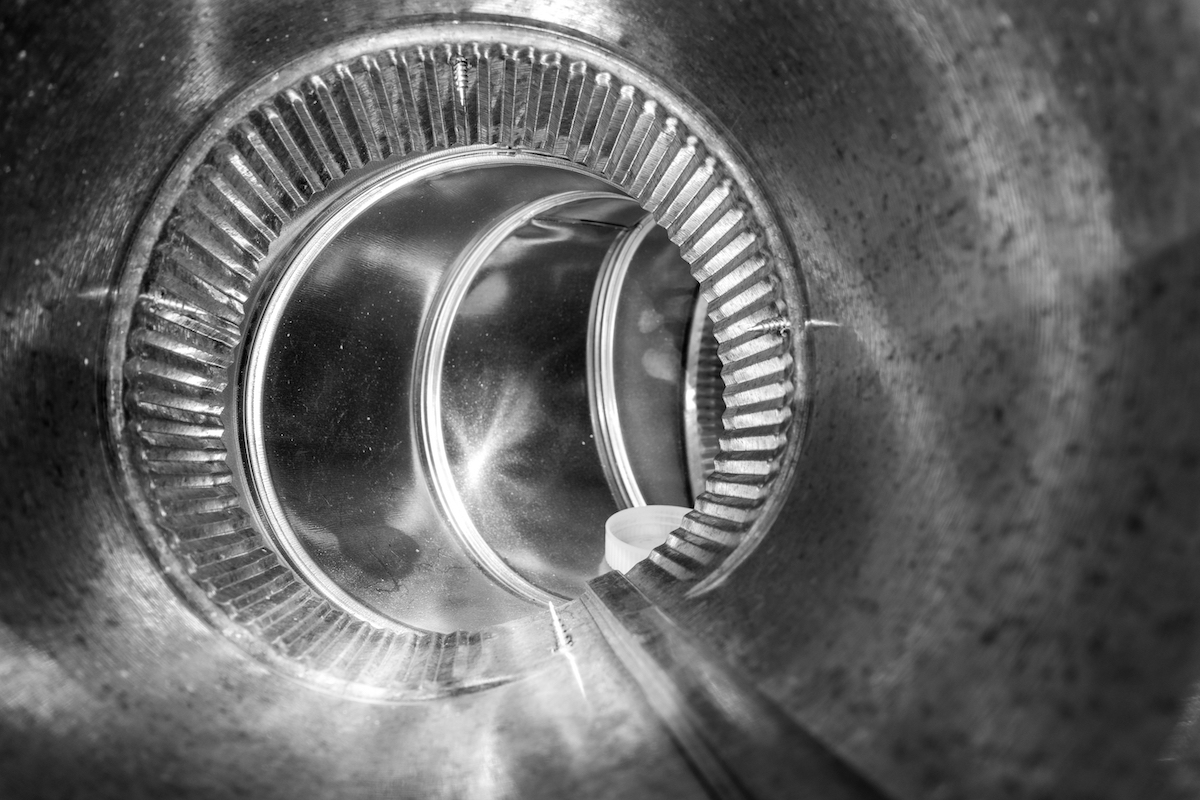

We may earn revenue from the products available on this page and participate in affiliate programs. Learn More ›
Mold in your air ducts isn’t just gross—it can make your home smell musty, cause respiratory problems, and exacerbate allergies. Since your HVAC system circulates air throughout your home, any mold inside the ducts can spread easily, making the problem worse over time.
To get expert insight, we spoke with Jon Gilbertson, president and CEO of Chris Heating & Cooling, about the most common causes of mold in HVAC systems and the best ways to prevent it. In this guide, we’ll walk you through everything you need to know, including where mold grows, how to spot it, and what causes it. We’ll also cover testing and removal options, what to expect in terms of cost, and the best ways to keep mold from coming back.
How Mold in Air Ducts Impacts Your Health
Mold in your HVAC system can affect the air you breathe and cause health problems if left unchecked. Since air ducts circulate air throughout your home, any mold inside the system can spread quickly, releasing spores into every room.
If your AC smells musty when it kicks on or you notice mold in vents or other HVAC components, it’s important to act fast. Mold growth can worsen over time, leading to widespread contamination and potential health risks.
Common health effects of mold exposure include:
- Allergy-like symptoms (sneezing, coughing, runny nose)
- Wheezing or shortness of breath
- Chest tightness
- Sinus congestion or headaches
- Irritated eyes, throat, or skin
For people with asthma, lung disease, or weakened immune systems, mold exposure can be even more dangerous. If you or a family member is sensitive to mold, it’s a good idea to have your HVAC system inspected regularly to catch issues early.
Where Mold Grows in Your HVAC System
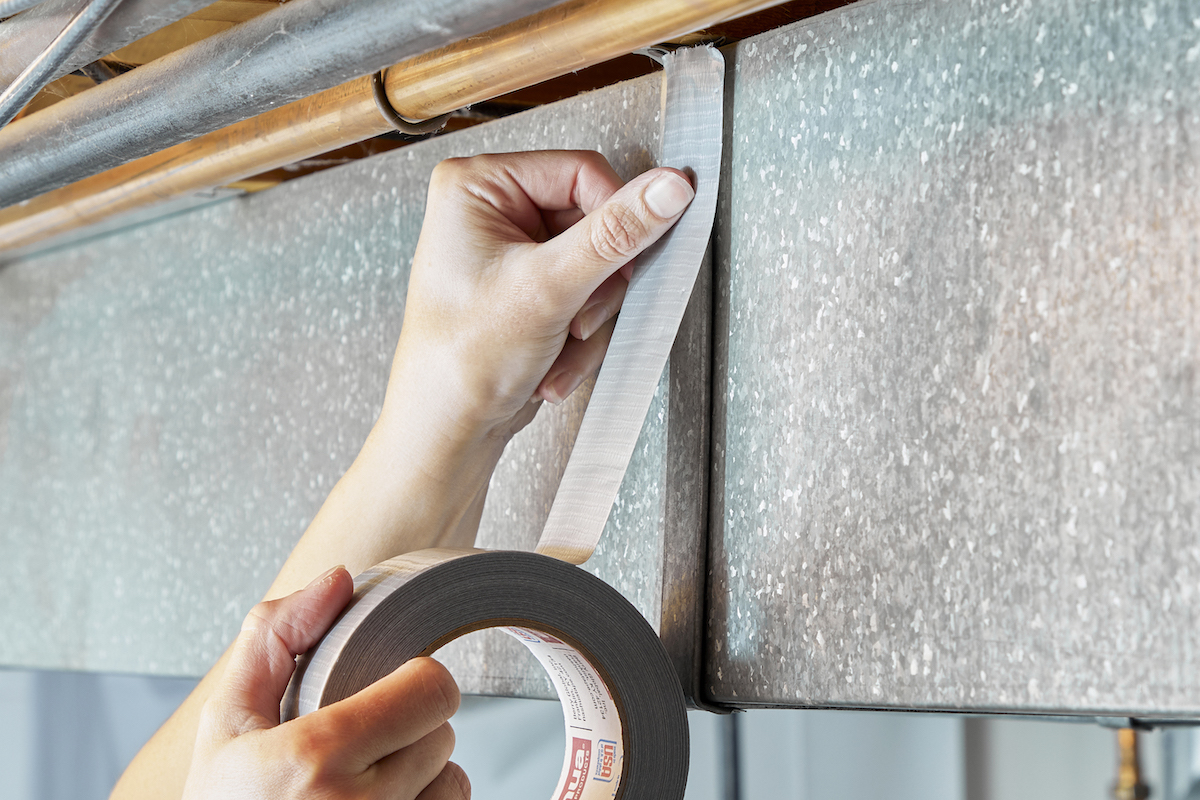
Air ducts are one of the most common places for mold to grow, but they’re not the only trouble spots. Any part of your HVAC system that collects moisture can become a breeding ground for mold if not properly maintained.
Common areas where mold can develop:
- Air ducts: Poorly sealed or insulated ductwork can lead to condensation buildup, creating the perfect environment for mold. If you notice musty odors when your AC runs or see dark spots inside the vents, mold could be lurking in the ducts.
- Evaporator coils: These coils cool the air, but they also produce condensation. If water isn’t properly drained, mold can grow on the moist surfaces. A visual inspection of the coils may reveal mold buildup, or you may notice reduced airflow from your system. HVAC expert Jon Gilbertson explains, “Mold usually starts in the AC drain pan or evaporator coil, so the surest way to catch mold is to check these parts.”
- Drain pan: The drain pan collects condensation from your HVAC system, but if it isn’t cleaned regularly or has drainage issues, stagnant water can lead to mold growth. If the pan is full of standing water or has visible slime or discoloration, mold may already be present.
Since mold can spread quickly, catching it early is key. If you suspect mold in any of these areas, it’s important to take action before it spreads through your entire system.
Signs of Mold in HVAC Ducts
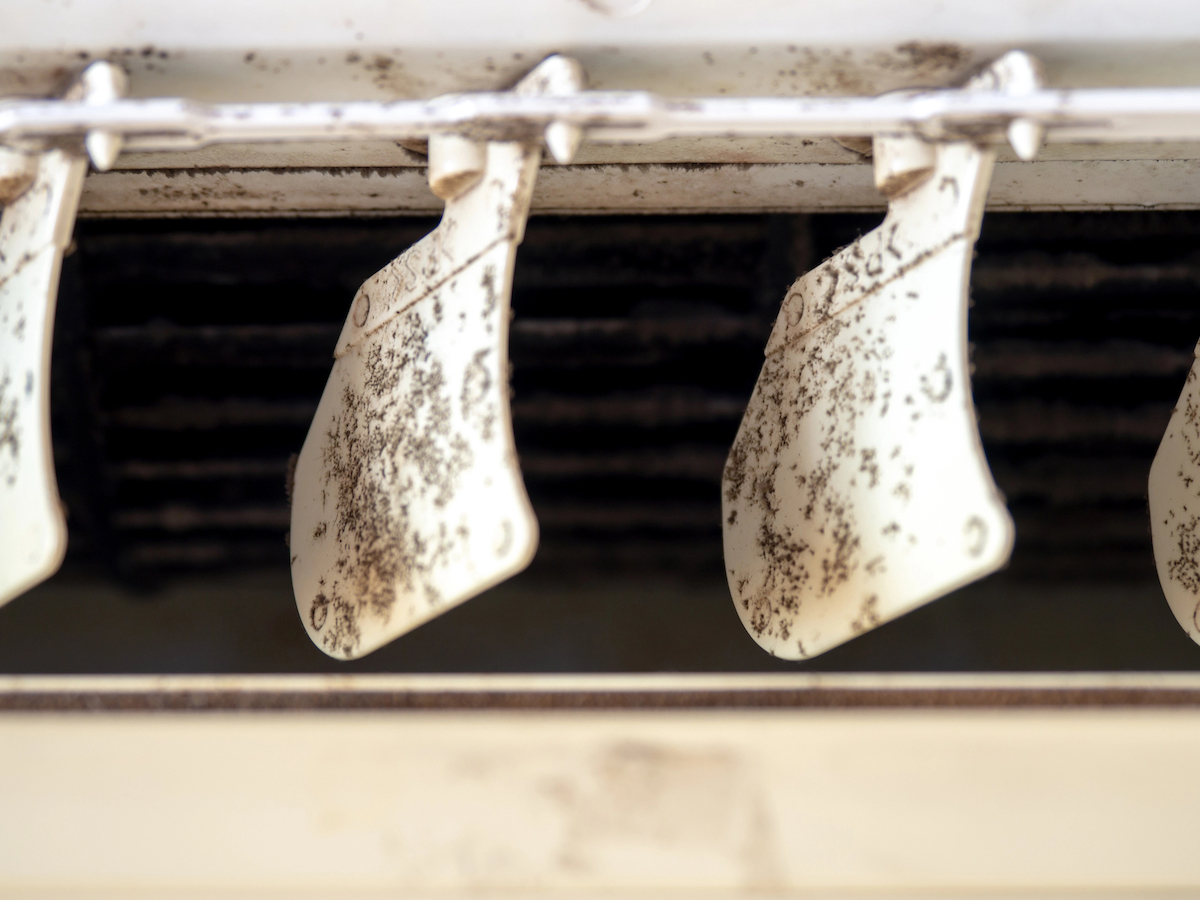
Mold in your HVAC system isn’t always easy to spot, but there are several key warning signs to watch for. According to Gilbertson, “A musty odor is often the first clue that you have mold in HVAC ductwork or other components. If you notice it every time the system runs, it’s worth investigating further.”
1. Musty or Moldy Odor
A persistent musty smell in your home, especially when the HVAC system is running, could indicate mold inside the air ducts, evaporator coils, or filters. Homeowners who recognize this distinct odor should inspect their system for visible signs of mold growth.
2. Visible Mold Growth
Check air vents, ductwork, coils, and drip pans for dark spots, discoloration, or fuzzy patches. If you spot anything unusual, it’s best to contact an HVAC or mold remediation specialist for a professional assessment.
3. Unexplained Allergy or Respiratory Symptoms
Mold spores circulating through your home’s air can trigger allergy-like symptoms, such as:
- Sneezing and coughing
- Nasal congestion
- Watery or itchy eyes
- Wheezing or shortness of breath
- Worsening asthma symptoms
If these symptoms worsen when the HVAC system is running, mold contamination may be the culprit. “Many homeowners don’t realize their HVAC system could be contributing to their health issues,” says Gilbertson. “If you experience symptoms indoors that clear up when you leave, it’s a red flag.”
Common Causes of Mold in an HVAC System
Mold thrives in moist environments, and your HVAC system can become a breeding ground if certain conditions are met. Gilbertson explains, “Excess moisture is the key factor in mold growth inside HVAC systems. Any source of moisture—whether it’s a leak, high humidity, or poor airflow—creates the perfect environment for mold to spread.” Here are the most common causes of mold in HVAC systems:
- Leaking or damaged ducts: Leaky ducts can let moisture into the system, leading to mold growth inside the ductwork. If moisture isn’t properly drained or dried, mold can develop and spread throughout the system.
- Oversize AC unit: An AC unit that’s too large for the space can cause the system to cool the air too quickly, leaving humidity behind. This excess moisture can accumulate, fostering mold growth.
- Excessive humidity: High humidity levels, especially in areas like Florida or coastal regions, can lead to moisture buildup inside the HVAC system. Keeping humidity levels between 30 and 50 percent is key to preventing mold.
- Poor ventilation: Inadequate airflow causes stagnant air, which allows moisture to linger in the system. Without proper ventilation, mold spores can settle and grow.
- Neglected maintenance: Failure to clean or replace air filters regularly can result in the accumulation of dust, debris, and moisture—perfect conditions for mold to thrive. Regular maintenance helps prevent both mold and dust buildup.
Addressing these issues proactively can prevent mold from taking root in your HVAC system, keeping your home safe and your air clean.
How to Test for Mold in Your Ducts
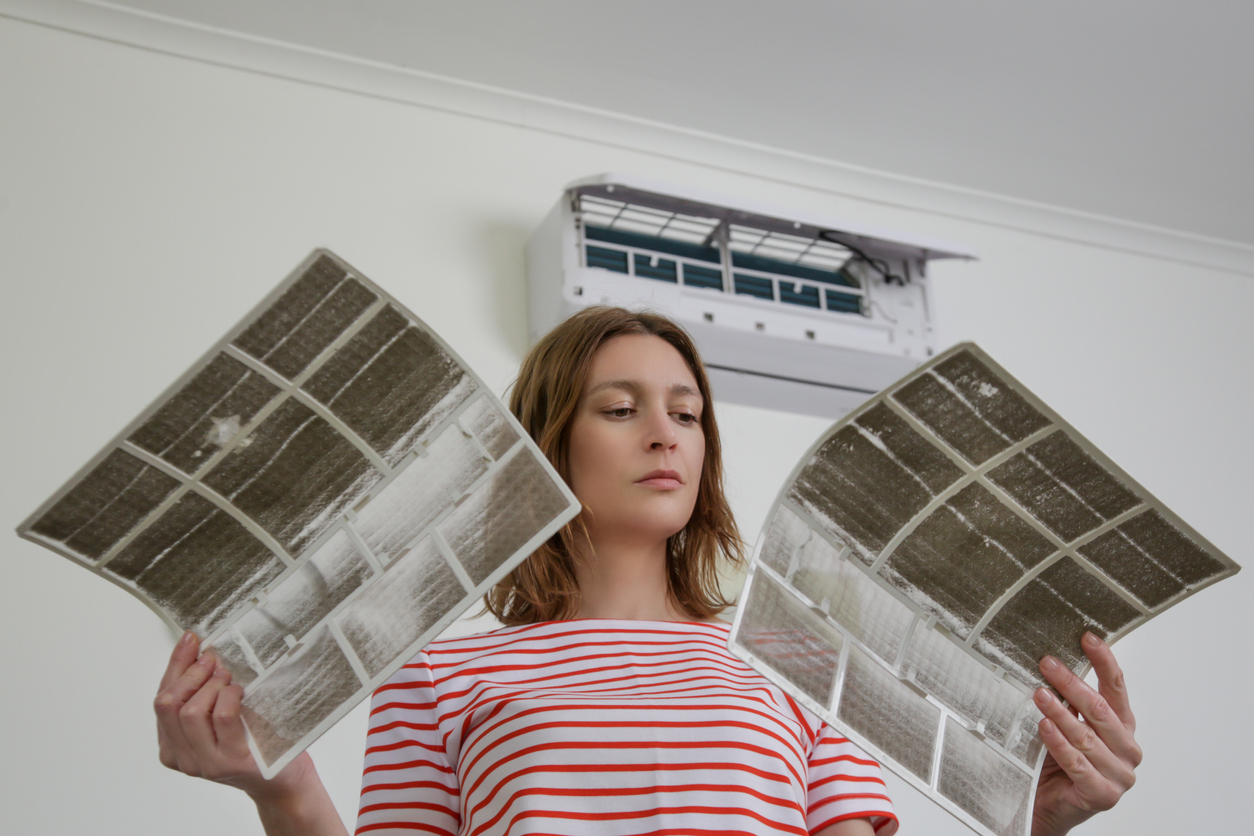
If you suspect mold in your HVAC system, there are ways to test and confirm its presence. Gilbertson advises, “Testing for mold in HVAC systems can be tricky, but using a mold test kit or hiring a professional can help you identify the problem before it spreads.” Here’s how to go about it:
- At-home mold test kits: You can purchase a mold test kit to check for mold in the air. However, these tests are usually designed to detect airborne mold spores, not mold specifically in the ducts. If you suspect the mold is contained within the HVAC system, this test may not be conclusive.
- Visual and smell inspection: Before relying on a test kit, visually inspect for musty smells or signs of mold in air vents, ductwork, and evaporator coils. If you notice dark spots, fuzzy patches, or a persistent musty odor, these are clear indications of mold.
- Professional mold inspection: If you’re unable to identify mold through smell or visual inspection, or if you want confirmation, hiring a professional is the best option. A certified mold inspector or HVAC technician can conduct a comprehensive evaluation of your system, taking air, surface, and swab samples. These samples are then sent to a lab for analysis, providing accurate results.
If the mold is confirmed, a professional mold remediation service can help you address the issue before it spreads further.
How to Get Rid of Mold in Air Ducts
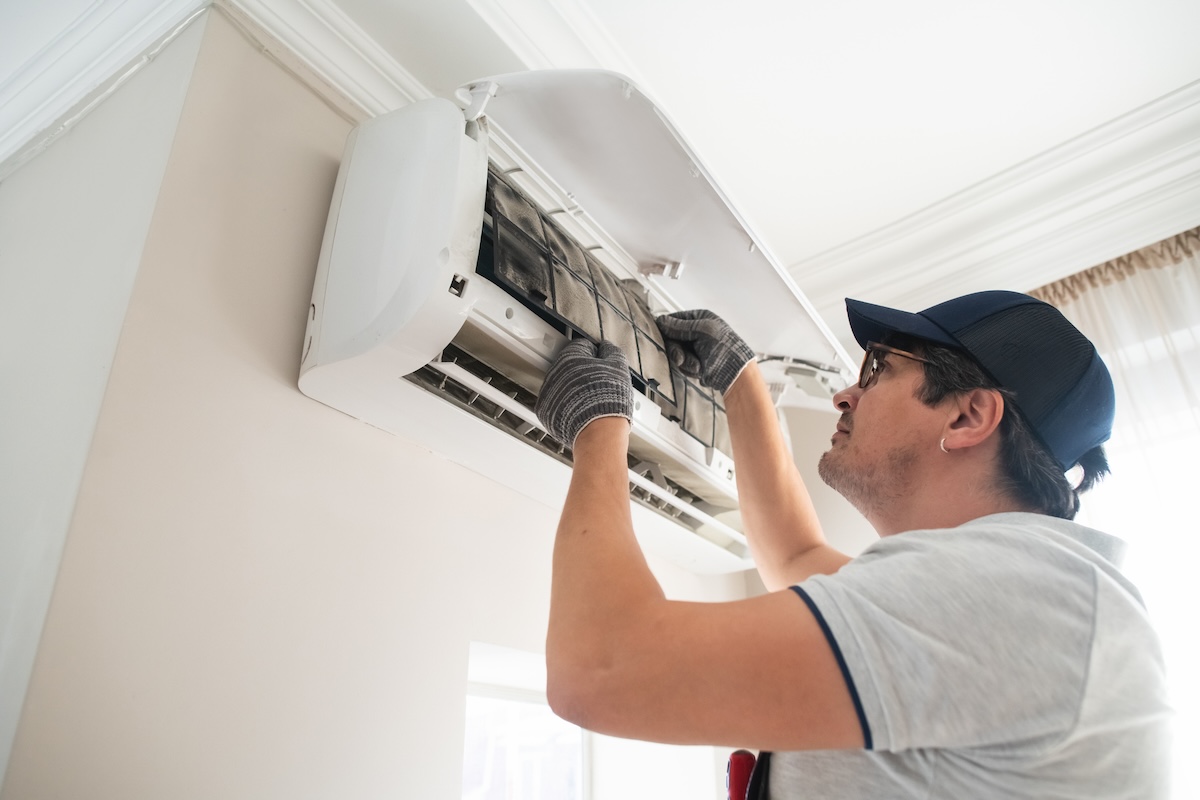
Removing mold from your HVAC system can be a DIY project for minor problems, but more serious cases should be left to the professionals. As Gilbertson from Chris Heating & Cooling explains, “The key factor in determining whether to tackle mold removal yourself is the extent of the contamination. For larger areas, it’s always safer and more effective to hire a professional.”
Here’s a step-by-step approach to HVAC duct mold removal:
1. Turn off your HVAC unit.
The first thing you should do is turn off your HVAC system to prevent further circulation of mold spores through the air.
2. Assess the extent of the mold problem.
If the mold covers more than 10 square feet, the EPA recommends hiring a professional. Mold issues of this size can be difficult and dangerous to manage on your own.
3. Check the type of air ducts you have.
Some duct systems, like fiberglass ducts, can be more challenging to clean without causing damage. Understanding your ductwork type will help you assess whether DIY removal is possible or if it’s time to call in the experts.
4. Hire a professional mold remediation or HVAC specialist.
If you’re unsure of your ability to do the cleaning yourself or if you’re dealing with extensive mold growth, it’s time to hire a professional. An HVAC specialist or mold remediation company will have the experience, tools, and protective gear necessary to safely remove mold and restore your system.
5. Consider professional air duct cleaning.
Even after mold removal, it’s a good idea to bring in a pro to have your air ducts cleaned to ensure that all spores are removed and the system remains free of mold.
Hiring a professional is especially important for the health of your household, as they will ensure thorough removal, preventing mold from returning.
How Much Does It Cost to Remove Mold From Air Ducts?
The cost of mold removal from your HVAC system can vary depending on the size of the infestation, the complexity of the job, and whether you choose a DIY approach or hire a professional. While small mold issues might be manageable on your own, larger mold problems or those requiring specialized tools and knowledge should be handled by experts.
On average, homeowners can expect to pay between $1,125 and $3,439 for professional mold removal services, with air duct cleaning typically adding $100 to $400 to the total cost. The average cost of the service tends to fall around $2,254.
As Gilbertson advises, “It’s always worth the investment to hire a professional for larger mold issues. While the upfront cost might seem high, it’s much more affordable than dealing with long-term health issues or costly repairs from mold damage.”
How to Prevent Mold in Your Air Ducts
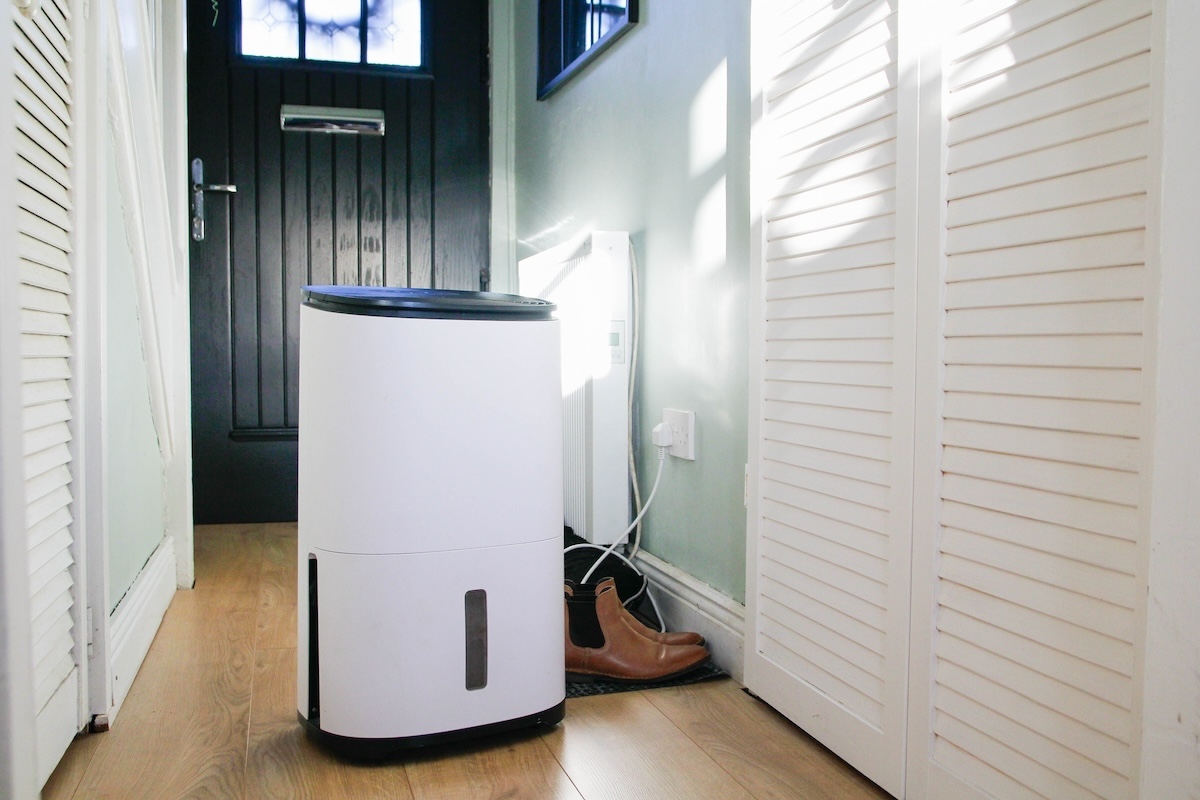
Preventing mold in your HVAC system is essential to ensuring the air quality in your home remains healthy and your system operates efficiently. Here are some steps homeowners can take to avoid mold growth:
- Regularly replace HVAC filters: Change the filter every 1 to 3 months to prevent dust and debris buildup.
- Run your HVAC system regularly: Operating the system helps circulate air and prevent stagnant moisture.
- Control humidity levels: Use dehumidifiers and ensure your home’s humidity stays below 60 percent to discourage mold growth.
- Address water leaks right away: Fix leaks quickly to prevent moisture buildup in the ducts and system.
- Inspect the system’s drainage: Ensure the condensate drain is clear to prevent standing water in the system.
- Schedule annual HVAC inspections: Having an HVAC professional check the system and perform a mold inspection can catch potential problems early and save on costly repairs later.
As Gilbertson suggests, “Preventing mold growth is much easier and more affordable than dealing with the aftermath of an infestation. Regular maintenance is key.”
By addressing mold in your HVAC system promptly, you can prevent health issues, eliminate unpleasant odors, and maintain a safe, clean environment for everyone in your home. Whether you choose to tackle the problem yourself or bring in a professional, taking action early is key to keeping your home’s air quality at its best.
